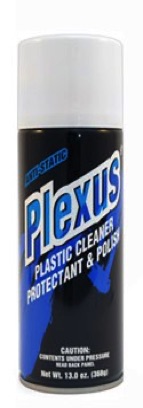
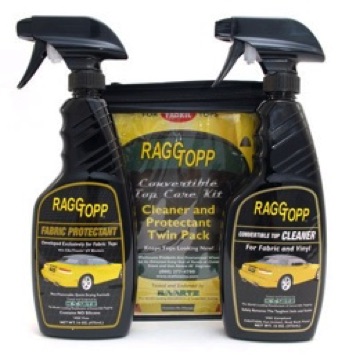

Published in the June 2011 issue of “Die Porsche Kassette”

Being able to drop the top and drive “al fresco” is one of the greatest feelings in owning a Porsche cabriolet. The experience of sun and wind in your face, together with the enhanced sounds from your engine and the aromas of the countryside or of the exhaust and tire smoke of the car in front of you at the track, make owning and driving these open top cars very special.
The other side of the coin is that these cars also offer most of the coupe’s benefits when the weather or other conditions dictate the need for top up. So cab owners have the best of both worlds.
As you know, the material used on the Porsche cabriolets is a type of canvas, but not all canvas is the same. The Haartz Corporation supplies the majority of all of the auto manufacturers with close to 30 different canvas and vinyl materials, each with different specs. The Porsche Boxster and Carrera Cabriolets use, as an OEM material, the special Sonnenland A5.0 fabric from Haartz.
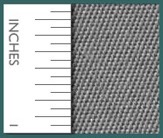

Haartz images used with permission from The Haartz Corporation.
This is an acoustically-enhanced, three-ply composite made of a surface singed acrylic twill weave outer fabric, a rubber or elastomer inner layer and a polyester (cloth) lining fabric. This unique construction of the material dramatically enhances in-cabin comfort when the top is up by reducing noise levels and providing sound attenuation over standard canvas material aside from the obvious which is protection from the elements and allowing the HVAC system to operate normally.
Porsche engineers have worked to fine tune the acoustic properties of the cabriolets to provide maximum comfort inside the cabin with the soft top in the up position. In conjunction with the Haartz topping material a noise deadening acoustical padding is crafted to compliment the properties of the top’s material. This combination of materials provides passengers with state-of the-art comfort.
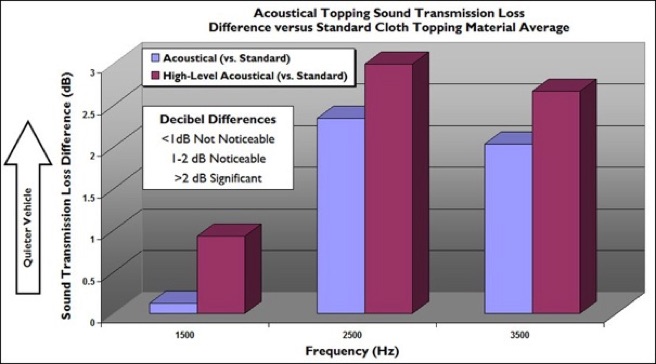
But, in order to enjoy for many years the added perks of the convertibles, there are a few things that you, as an owner, need do that coupe owners don’t.
A unique set of challenges comes with your special drop- top. The material from which the top is made as well as the clear plastic window are far more delicate and vulnerable to the elements and in particular, to UV radiation than the rest of the painted surfaces of the car.
The best thing you can do for a brand new soft top is to protect it on day one, when it’s still clean and free of contaminants. The day you bring it home you should treat it with a good UV inhibiting product, paying special attention to its weakest part, the stitching.
The next best thing is to do it now.
Convertible tops should never be stored down when the material is wet. The fabric does not promote mildew growth on it’s own, but mildew can develop on dirt and grime when not removed. This is more important for warm, humid and dark environments.
When dust and dirt settle into the material’s weave, if left, over time will start to break down the fabric acting as sandpaper and cutting into the weave itself.
When cleaning your soft top, do NOT use detergent or other harsh chemicals. There are several products made specifically for cleaning soft tops, and one in particular, Ragg Topp is endorsed by Haartz and most convertible owners. Ragg Topp offers two basic products: a cleaner and a protectant.
To clean the top, do so in the shade or partial shade. If there are bird or tree droppings on the canvas, first vacuum with a soft brush attachment and then pre-soak the affected area with water. This will soften the deposits. Many times a strong water stream is all that’s needed in order to get most of the dirt and grime off the top. When the deposits are tougher, you can spray the cleaner evenly over the complete soft top, letting it soak in from 2 to 20 minutes depending on how soiled it is, and then scrubbing lightly with a soft-bristle brush and finally rinsing with running water until the runoff is clear and no more cleaner remains on the material.
Washing with a mild soap, such as Ivory or Lux is also a safe alternative to the Ragg Topp cleaner, but not as effective.
Once the top is completely dry, it should be followed up with several coats of Ragg Topp Protectant which will waterproof the fabric and filter out most of the damaging UV rays from the sun. This protectant will make water bead on the canvas and will help maintain the top’s color over the years with minimum fading.
As of 2003 all of Porsche’s cabs now come with a glass window that requires no more maintenance than any other glass window, but prior to that year the top’s rear window was made of a flexible polyvinyl material which was sewn into the canvas allowing it to fold on itself. This clear material tends to fog and scratch and becomes the biggest complaint from cab owners. The fogging seen on polyvinyl windows happens when the plasticizers in the material evaporate due to exposure to UV light and heat from the sun. These plasticizers are what keep the plastic windows flexible and soft. So, the best way to prolong the clarity and flexibility of the clear plastic window is to keep the sun off the material as much as possible.
Whenever the car is stored outside, at least the clear plastic window if not the complete top or car should be protected with a cover.
Keeping the clear plastic window clean and using a protectant called Plexus which also has UV inhibitors and special additives will extend the use and life of the window.
This product was developed for the acrylic canopies of fighter jets and does a great job of protecting the clear plastic window as well as the clear wind stop in our cars.
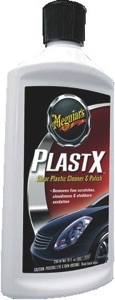
If your clear plastic window has minor scratches and yellowing it can be restored by using a high-quality plastic polishing compound such as “Plastix” by Meguiar’s.
When retracting a soft top with a plastic rear window, it is recommendable to stop the action mid way. Get out of the car and manually adjust the fabric and plastic so that no kinks or sharp angles are created when you continue the folding operation. Even placing a soft towel or similar between the folds of the plastic window will help maintain it’s clarity, avoid scratches and prolong overall life.
If the air temperature is under 55 ºF do NOT try to lower or raise the top with a clear plastic window unless you first warm it up so that it becomes pliable. A hair dryer or placing a piece of black plastic over the window and leaving it under the bright sun for a few minutes will warm it up enough so that you can fold or unfold it. Not following these precautions may cause the window to crack and split open since the cold makes the plastic much more brittle.
If this happens the only solution is to replace, but since the window is sewn in most of the time the complete top’s cover needs to be replaced. There is an alternative which some people have used which is removing the material from the top’s frame and taking it to a yachting center that repairs marine canvas and having them cut out the old and sew in a new piece in its place.
There are also new alternatives for the older cabs with the flexible plastic windows. Several aftermarket manufacturers offer tops with a bonded glass window that can be installed onto the older top’s frames. These windows are a bit smaller than the original plastic window, and they are somewhat more cumbersome for engine access in the case of the Boxsters, but they offer defrosting elements within the glass to quickly clear fog and melt ice and snow. Some of these aftermarket suppliers also offer the same OEM fabrics from Haartz on their products so you can have the same OEM quality even on a replacement top.
The top in my 1998 car is still original, a testament to the quality of the Haartz material. I treat it with Ragg Topp protectant twice per year and it has not faded at all, even though it is a South Florida car.
Last year the stitching on the then somewhat scratched plastic window failed and I decided to keep the top and sew in a new plastic window myself, by hand, stitch-by-stitch.
I did it, it came out very nice, but it just took too long.
At least I don’t have to sew in a new window for another 13 years!

To obtain additional information about convertible tops and more, please visit my website at: www.PedrosGarage.com.
Happy Porsche-ing,
© 2011 Technolab/PedrosGarage.com


